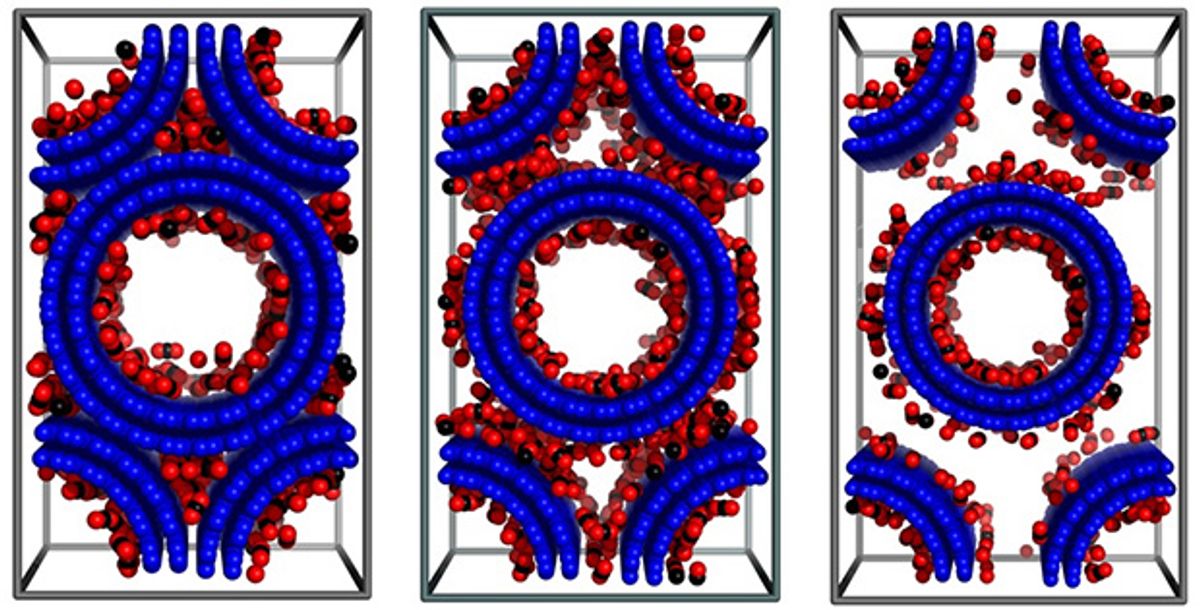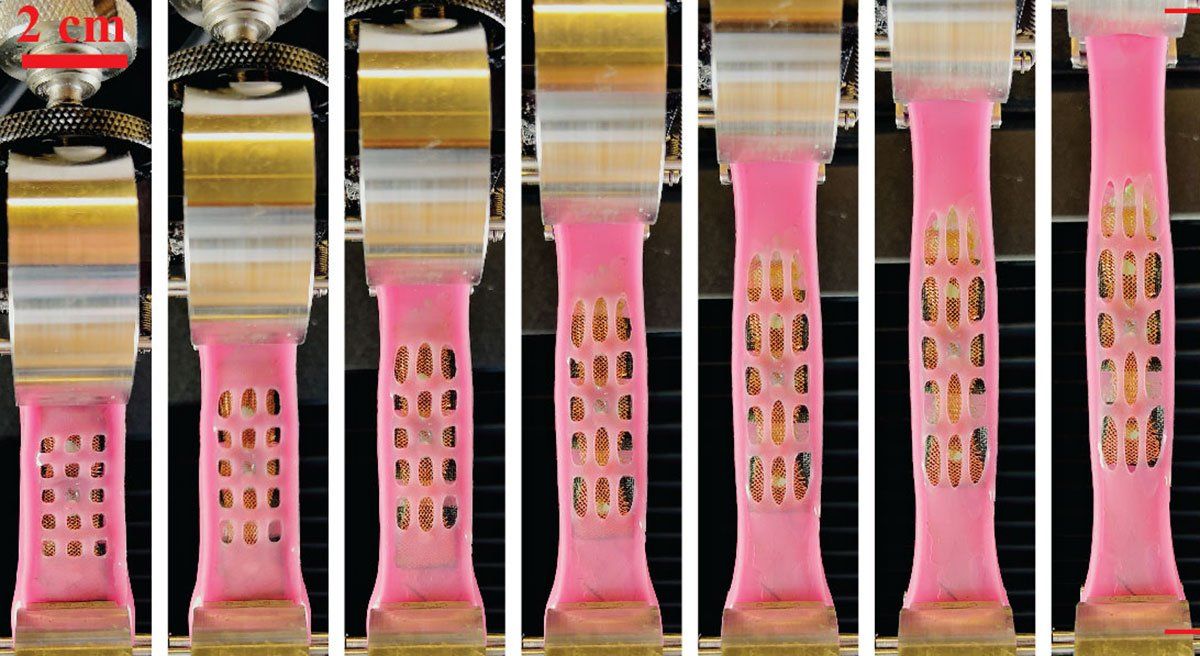Whether you see carbon capture tools as solutions to environmental remediation or power generation, it has become increasingly clear that nanomaterials are pretty good at it.
Now researchers at Technische Universität Darmstadt in Germany and the Indian Institute of Technology Kanpur have found that they can tailor the gas adsorption properties of vertically aligned carbon nanotubes (VACNTs) by altering their thickness, height, and the distance between them.
“These parameters are fundamental for ‘tuning’ the hierarchical pore structure of the VACNTs,” explained Mahshid Rahimi and Deepu Babu, doctoral students at the Technische Universität Darmstadt who were the paper’s lead authors, in a press release. “This hierarchy effect is a crucial factor for getting high-adsorption capacities as well as mass transport into the nanostructure. Surprisingly, from theory and by experiment, we found that the distance between nanotubes plays a much larger role in gas adsorption than the tube diameter does.”
Previously, carbon materials in gas adsorption-desorption suffered from hysteresis effects in which the property of the material was somewhat behind the factors that were changing it. In the case of carbon nanotubes, the sizes, structure, and distribution of the pores in the material were slow to react to these changes.
In research published in The Journal of Chemical Physics, the researchers first set out through computer modeling to gain a better theoretical understanding of adsorption and selectivity in carbon materials.
Then through experimentation, the researchers validated their models and demonstrated that VACNTs adsorbed the gases of carbon dioxide (CO2) and sulfur dioxide (SO2) better than traditional adsorption materials, such as porous carbon, zeolites, and metal organic frameworks within the mid-pressure (30 bars) regime. “This adsorption range is important for technologically relevant processes like gas storage for automotive purposes,” noted Rahimi in the release.
In future research, the plan is to introduce specific atoms to the carbon nanotubes for elemental doping.
Rahimi added: “This will allow us to further tune the gas selectivity. Another area we’ll also explore is ‘controlled carbon nanotube openings’ in such VACNTs to increase the gas adsorption.”
Dexter Johnson is a contributing editor at IEEE Spectrum, with a focus on nanotechnology.


